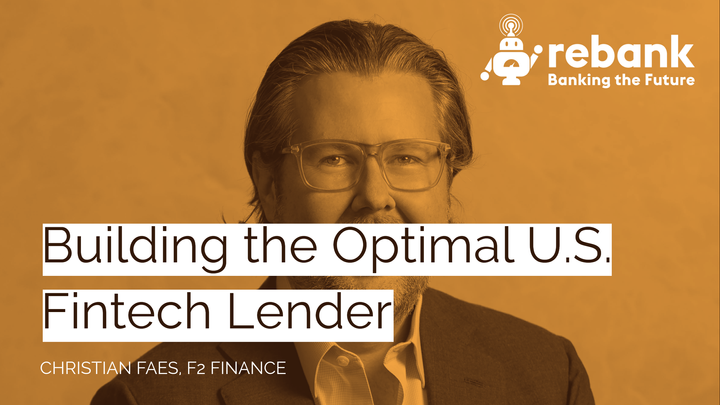How to Leverage Data to Fix Consumer Credit

We were joined by Freddy Kelly, Founder of Credit Kudos, and Matt Ford, Founder of Pariti, on Episode 90 of Rebank Podcast. Here are the key takeaways from that conversation:
The big shift underway in credit underwriting is from a backward-looking process based on historical data to a forward-looking one based on real-time, behavioral data.
In making credit decisions, lenders have traditionally looked at credit scores, past credit performance, aggregated borrower performance, criminal/default information, acquisition channel data and website interaction data.
Credit is less popular with 21-30 year olds today, so it's harder to do backward-looking credit underwriting for the segment. Carrying a credit card balance and taking out personal loans is less common in this age group.
The traditional credit scoring model has a one-month lag. It's not real-time and perhaps unsuited for a world in which data is constantly available.
Customers don't know how they're being evaluated. Calculations behind credit scores are opaque, as are lender approval processes. As a result, customers find it uncomfortable to apply for credit.
Credit Kudos allows borrowers to pull in data from multiple sources, including bank transactional data, and share it with lenders, enabling them to make more precise lending and pricing decisions.
Transactional data enables lenders to make decisions based on real-time, behavioral analysis and supports more precise affordability calculations.
Pariti was built to help customers improve their credit scores and access new sources of credit. The app provided transparency into the factors required to improve a user's credit score and prompts to help them take positive action, Now, having been acquired by Tandem, Pariti can help customers directly by guiding them through the entire credit lifecycle, designing products to meet their needs and supporting healthy financial habits over time.
Open Banking is huge for credit. It unlocks a massive dataset (transaction data) that previously wasn't available. It allows lenders to create better products based on customers' actual financial habits. It also enables customers to benefit from more accurate pricing and personalized financial guidance.
Aggregation is one of the least interesting benefits of Open Banking. Anyone who really wanted to aggregate had found ways to do it before. The user interface is irrelevant in terms of how people interact with their banks - in time, it will change and dematerialize. The power of Open Banking lies in informing new product offerings and the data insights to go with them.
Open Banking creates a huge opportunity to serve the SME space better, using machine learning and new datasets to deliver the same management skill and insight to small businesses that large corporates achieve with big finance teams.
Are there concerns about new data and better algorithms making credit systematically inaccessible to people with bad transactional records? The consensus is no. If anything, credit risk will be priced more accurately and extended to people who were tougher to underwrite previously (keeping them out of the vicious payday loan loop). Also, as predictive insights become more widely available, we'll be able to nudge people toward better habits, which traditionally hasn't been possible.
Some credit bureaus and lenders are starting to look at successful regular rent payment among the underwriting criteria, which, shockingly, they'd never done before.
SoFi is interesting in that they're extrapolating forward based on education levels and career trajectory to inform lending decisions.
Tandem is looking at how to build credit products differently based on new data they can access plus insights into how to help customers better achieve their goals.
Why was ClearScore acquired for £285 million, only a few years after launch? Because they did a great job (using the Credit Karma business model) of achieving monthly user engagement around credit scores and then selling new credit products to those users.
Tandem sees the opportunity to create a one-to-one relationship between financial activity and availability of credit. They're working to create a process that says if you do X and Y, then you'll qualify for an increase of Z on your credit limit.


